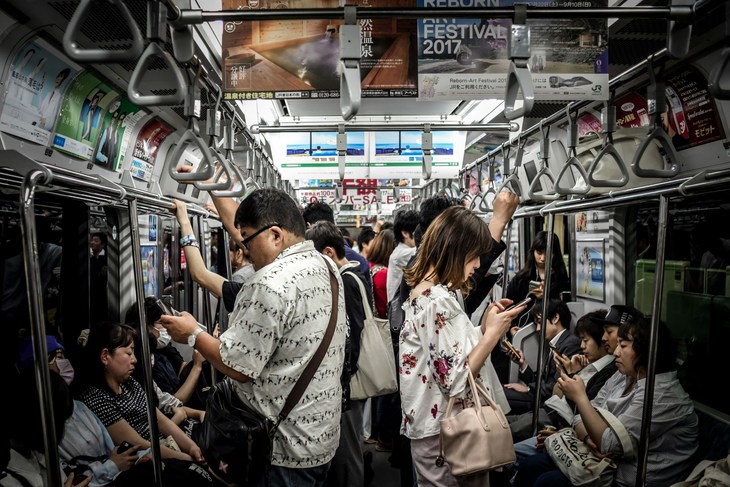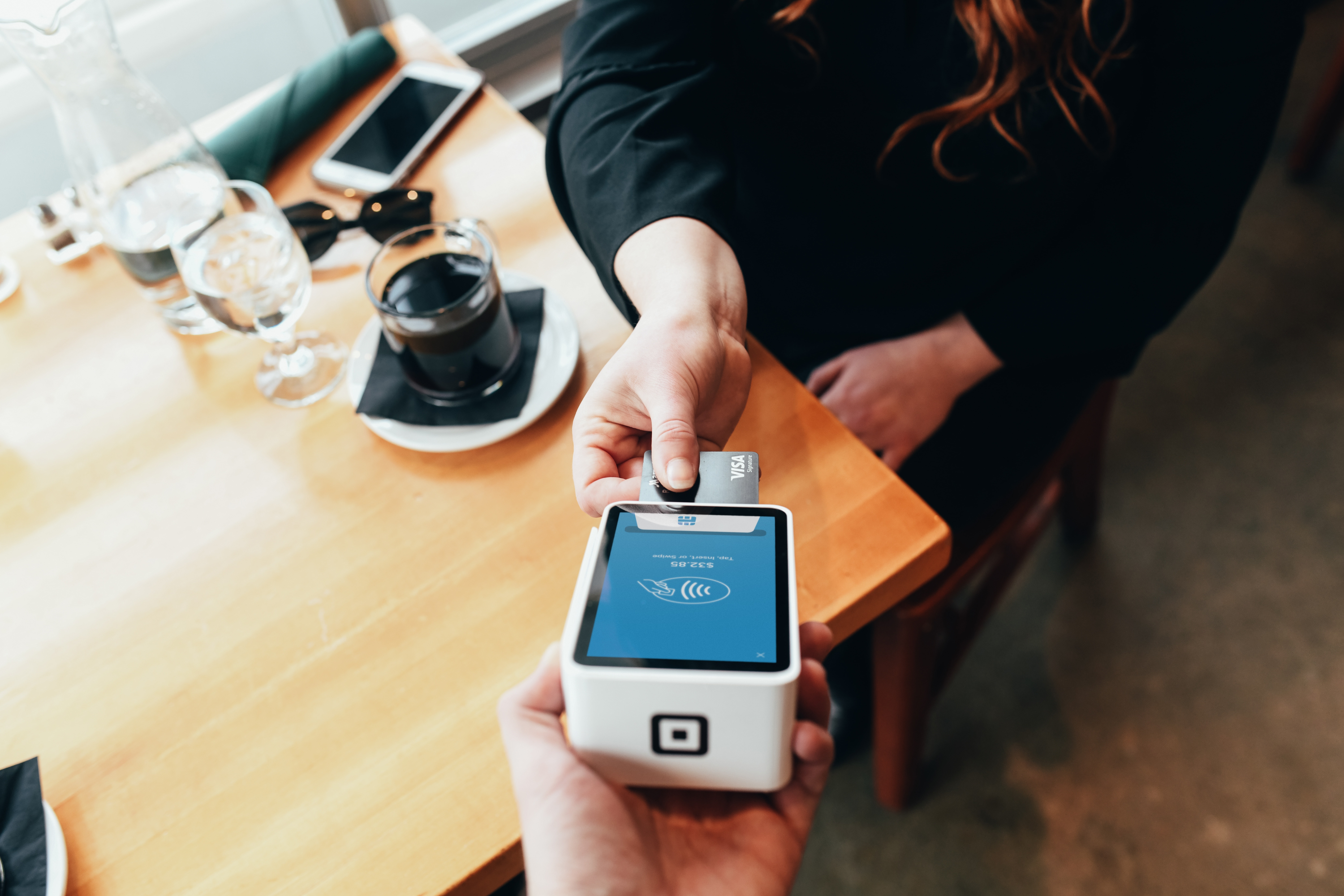How to Get a Smartphone in Japan
If you've moved to Japan, you're probably going to need a phone. But coming to a new country, especially if you do not speak the language, can make getting a new phone and plan seem daunting. To take away all that stress, let's take a look at how to get a smartphone in Japan, from what you'll need to make a contract with a mobile carrier to which carrier in Japan is best for you.
How to Sign Up for a Phone Contract
To sign up for a new contract with one of Japan's three major wireless carriers, your best bet is to head to one of their stores. You can find them all over major cities in Japan as well as inside department and electronics stores. The major carriers all have stores where staff can speak English or other languages, so check the carrier's website which stores have staff who speak which language. If you have just arrived in Japan and can't speak Japanese, visit one of these stores or bring someone with you who can speak Japanese to help you out.
Nowadays, signing up for phone plans with carriers online is also usually possible. However, some carriers may not have online sign-ups available in English, which is why signing up at a store may be your best choice when you are new to Japan. Plus, if you are getting a new phone as part of your plan you'll be able to start using it as soon as you leave the store, rather than having to wait for it to come in the mail.
To sign up for a phone plan you need to meet a few requirements. First, you'll need to have ID, ideally the residence card you get at the airport when you first move to Japan. You'll also usually need proof of your address, which can be a utility bill with your name on it, an official "juminhyo" (residence record) that you can get from the city hall or ward office where you registered your address, etc.
Wireless carriers are usually most concerned about whether or not you can pay for your plan, so they usually require you to either have a credit card in your name you will use to pay, or a bank account from which your phone bill will be withdrawn monthly. If you don't have a credit card or a Japanese bank account, you'll need to arrange either one before you can get a smartphone from many carriers.
Also, you should know that wireless carriers will only make contracts with people over 20 years old. So if you have children and you want them to have their own smartphones, they'll need to sign up through your contract rather than make their own.
Major wireless carriers usually require you to sign up for a two-year contract, especially if you also buy a phone as part of the plan and are going to pay for it monthly. If your visa's period of stay is for only one year or you only have a year or less left on your visa, you'll may have to pay for the new phone completely upfront, or you may not be allowed to sign up at all.
There are two main kinds of wireless carriers in Japan: the major mobile providers and smaller, budget-friendly carriers that are known as MVNOs (mobile virtual network operators). We'll cover both kinds of carriers and tell you about some of the carriers that you have available to choose from.
The Three Major Mobile Phone Providers in Japan
If you want to use a major carrier's services in Japan, you have three main options. They each have their own plans, advantages, and disadvantages, and each company also offers additional services or potential benefits on top of their smartphone plans. All three carriers provide reliable coverage across the entire country, so which one you choose will depend on which one is the most attractive to you.
Using a major carrier will also give you access to free wi-fi networks run by the companies for their customers, which are usually available in stores or restaurants. They all also give you the choice to sign up for their point cards, which you can use to accumulate points that can eventually be redeemed for various goods or at shops.
One key difference between the major carriers and many MVNOs is that all of the major carriers offer plans where you can buy a new phone as part of the plan and pay it off as part of your monthly phone bill. Keep in mind though that if you choose to use one of the major carriers, your monthly phone bills will likely be more expensive than if you were to choose a budget wireless carrier.
・ Docomo
Docomo is the largest mobile carrier in Japan and is a popular choice because of its network's stability and coverage. Thanks to partnerships with other businesses, Docomo users can also often get discounts at certain shops or department stores.
Click Here to visit Docomo's website and learn more.
・ au
Au, which is part of the telecommunications operator KDDI, is another major company with good coverage across the country. They are the second-largest wireless carrier in Japan. If you have a plan with au, you'll also get several perks, such as being able to get discounted movie tickets at some theater chains on Wednesdays and getting access to a pre-paid Mastercard au offers its members for free.
Click Here to visit au's website and learn more.
・ SoftBank
While SoftBank may not have as many customers as Docomo and au, it is still a big, popular wireless carrier in Japan. They recently partnered with the popular cashless payment app PayPay, making it so you can convert points you earn for using SoftBank into PayPay points that you can use for cashless payments. As cashless payments are becoming more accepted across Japan, this could be a nice perk for you if you decide to choose SoftBank.
Click Here to visit SoftBank's website and learn more.
Budget Carriers in Japan
If you want to keep your monthly phone bill down or use an unlocked or SIM-free phone, budget wireless carriers known as MVNOs may be a good option for you. Most of these companies allow you to migrate your phone to their network, and monthly costs are much lower than the major companies. Most MVNOs provide their services using one of the three major companies' networks, which is how they can keep prices down.
If, however, you want to get a new smartphone through a wireless carrier and pay it off monthly, MVNOs might not be right for you. While some of them do offer the ability to buy a phone as part of your plan, many do not. Those that do may only offer certain phones or the previous year's model of a phone, rather than the newest version. So if you want to get the latest iPhone as part of your phone plan through the carrier, a major carrier would be an easier choice.
Some MVNOs also do not have physical stores. Instead, the signup process is entirely online. While this can be convenient and get you started with your new plan quickly, especially if you just need an e-SIM for your old phone, if the MVNO does not have English support on their website it can be very difficult to sign up if you cannot read Japanese.
There are now tons of budget wireless carriers in Japan, but here are a few of the popular ones.
・Rakuten Mobile
Rakuten Mobile is one of the few MVNOs that operates its own network rather than using a major provider's. Their "pay-what-you-use" plans are popular and easy to understand since you pay based on how much data you use in a month, with the cost of using up to 3 GB of data being less than ¥1000. Applications for this carrier are mostly done online, but they do have some physical stores. It is also possible to buy a phone through Rakuten Mobile. Their high-speed network works great in urban centers, but since they operate their own network that is new relative to other networks, some users report spotty connections in some areas including more rural areas outside of the big cities.
Click Here to learn more about Rakuten Mobile.
・Y!mobile
Y!mobile is an MVNO that is in part operated by SoftBank, so it uses their network. This carrier also has phones available to buy through them, though the options are much more limited compared to SoftBank. Online signup is available in English, but Y!mobile also has physical stores all over Japan, so you can head to one if you want to sign up for a phone plan in person. They also offer various family plans and student discounts, so they likely have a plan that fits your needs.
Click Here to learn more about Y!mobile.
・UQ Mobile
UQ Mobile is a part of KDDI, the telecommunications operator that owns and operates au. They have a wide range of plans available to suit your needs, including packages with small monthly data caps all the way to huge ones. Like Y!mobile, you can buy a phone through UQ Mobile, though again options are more limited compared to a major carrier. You can sign up for UQ Mobile online or at one of their physical stores.
Click Here to learn more about UQ Mobile.
Online-Only Mobile Plans
Softbank, au, and Docomo all now offer flexible, inexpensive phone plans that can only be signed up for online. While this makes it convenient to sign up, it also means you won't be able to speak to someone in person at a store to guide you through the signup process. You usually won't be able to buy a phone through these plans, and may not even have access to customer service if you have any problems. Still, these are excellent options to save on your phone bill, so let's look at the online-only plans from each carrier.
・Povo
Povo is an online-only mobile plan from KDDI (the owners of au) that stands out for its "0 yen basic fee," which means users can maintain their mobile service for very cheap, without a fixed monthly charge. This plan is highly customizable, allowing users to purchase more data as needed, which can be added anytime through the Povo app. This flexibility is ideal for people who have varying data needs and do not want to be locked into a monthly fee. Plus, Povo offers various free options, including free data gifts and promotional offers.
・LINEMO
LINEMO, offered by SoftBank, caters to heavy users of the LINE messaging app, which is the most popular messaging app in Japan (think WhatsApp or WeChat). The plan lets you use LINE without the data used counting against the data cap and offers 3 GB of data for 990 yen or 20 GB for 2,480 yen per month. This makes LINEMO great for people who only communicate using LINE. Plus, LINEMO offers unlimited free calls for up to five minutes, similar to another plan, ahamo, and the plan is entirely manageable online.
・ahamo
ahamo is another popular online-only plan, offered by Docomo. This plan includes several great features, like unlimited domestic calls up to five minutes (like LINEMO) and 20 GB of high-speed data for a flat rate of 2,970 yen per month. They also offer a more expensive 110 GB plan. One of the best benefits of ahamo is free international roaming, so if you travel often, consider this option. Also, of the online-only plans we introduced here, ahamo is the only one with the option to buy a phone as part of your plan.
Can You use an eSIM in Japan?
Yes! Nowadays, major carriers in Japan all support eSIM technology, both through their main plans as well as through their inexpensive, online-only plans. In fact, some of the online-only plans, such as Povo, only offer service through eSIMs. On the one hand, this makes it easy to switch carriers, whether because you want to change to a new carrier or because you use different plans when traveling internationally. Rather than needing to switch out the physical SIM card, you can just go into your settings and quickly switch to the eSIM you want.
That being said, if you are coming to Japan with an older phone, and want to keep using it, you need to check and see if the phone supports eSIMs. If it doesn't, you'll either have to buy a new phone that does or choose a carrier that still offers physical SIM cards. Most carriers will have lists of supported devices on their websites, or you can check your phone manufacturer's website.
What are Phone Companies Charging You For?
Depending on the carrier you choose or your plan, it can be difficult to understand what exactly you are paying for, even if you speak Japanese. So let's break down the basic pricing of an average phone plan to help you understand what you are paying for.
・ Phone Costs
If you bought a new smartphone as part of your plan, you will be charged monthly for the phone itself. You can usually choose to pay off the phone up-front or in twenty-four or forty-eight installments.
・ Basic Monthly Charges
This basic monthly charge will not change month to month and is based on the plan you choose. This charge usually includes the number of minutes you can talk on the phone or how many SMS messages you can send, if any. Since texting through SMS is rare in Japan as everyone uses messaging apps such as Line to talk to each other, many phone plans do not include SMS messaging by default.
・ Web Usage Fee
The three major carriers in Japan charge a monthly fee to connect to the internet. Other smaller carriers may also include this charge, but it depends on the company.
・ Data Communication Charges
This is the charge for your monthly data usage. When you choose a plan, be sure to think carefully about how much data you will use in a month. If you go over your monthly cap, your phone's data speeds will usually be throttled significantly and you will have to pay overage fees, which can quickly jack up the price of your monthly phone bill.
Make the Choice That's Right for You
There's a lot to consider when signing up for a new phone plan, especially when you are moving to a new country and need to quickly get set up to communicate with others and find your way around the country. By keeping in mind all the information we've gone over today, you should be able to make an informed decision about what wireless carrier is best for you and whether it is best for you to keep using your current phone or buy a new one.
Whether you choose one of the major carriers or an MVNO, know that cell phone reception in Japan is usually excellent. Good luck finding the plan that's best for you!



























